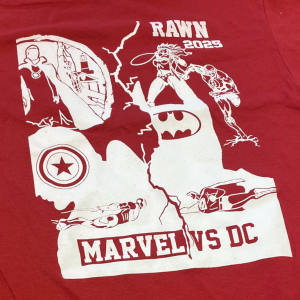Observing the 100th anniversary of the Tulsa Race Massacre
Remembering the attack on Black Wall Street with long-lasting effects, even a century later
Photo courtesy of the Brookings Institute
Greenwood’s Gurley Hotel after the 1921 Tulsa Massacre
June 10, 2021
The Tulsa Race Massacre occurred over 18 hours between May 31 and June 1 of 1921, during which a white mob attacked the homes, residents and businesses of Greenwood in Tulsa, Oklahoma. The attack remains to this day one of the worst events of racial violence in American history. As the 100th anniversary of the massacre passed just over a week ago, remembering what occurred and its lasting effect on survivors holds the utmost importance.
The precursor to the massacre began on May 30, 1921, when Dick Rowland, a 19-year-old Black man, rode an elevator with Sarah Page, a white woman. Although the accounts of what occurred in the elevator differ, Tulsa Police arrested Rowland the next day and an investigation began.
A report of the arrest was featured in the May 31 edition of the Tulsa Tribune stating that Rowland sexually assaulted Page, which eventually led armed Black and white mobs to engage in an altercation at the courthouse. Shots were fired and a group of Black men fled to the Greenwood District.
Various acts of violence were committed against Black people in the following hours by white Tulsans. Considering the racial atmosphere of the early 20th century, racially charged violence was not uncommon in the area.
At dawn on June 1, 1921, thousands of white men and women looted and burned the Greenwood District spanning 35 city blocks. According to History.com, “Firefighters who arrived to help put out fires later testified that rioters had threatened them with guns and forced them to leave.”
According to Tulsahistory.org, it is estimated that as many as 300 people were killed as a result of the attack in Greenwood despite the official Oklahoma Bureau of Vital Statistics report of only 36 deaths. The Red Cross later estimated, “some 1,256 houses were burned; 215 others were looted but not torched.”
After the Tulsa Race Massacre, the charges against Rowland were dropped, and the police concluded he was likely to have stepped on Page’s foot or stumbled into her. After he was released, he left Tulsa and never returned.
Despite the massacre being one of the worst events of racial violence in American history, it remained one of the least-known for a while. Photos of the massacre were confiscated by Tulsa police officers, practically erasing the event from history.
According to CNBC, “It wasn’t until 2000 that the slaughter was included in the Oklahoma public schools’ curriculum, and it did not enter American history textbooks until recent years.”
Alongside covering up the massacre that unfolded, the narrative was shifted by Tulsa city officials to blame the Black community for what occurred and only referred to it as a “riot,” which allowed them to refrain from helping rebuild after the damages.
According to an article in the American Journal of Economics and Sociology, “The additional loss of other assets, including cash, personal belongings and commercial property, might bring the total to over $200 million.”
The Greenwood residents were also denied claims to “over $1.8 million dollars in damage claims; in today’s dollars, this would be over $27 million.”
As historians began to uncover the details of the massacre, it further solidifies how it continues to affect survivors and their descendants considering the prosperity of what came to be known as Black Wall Street, a prosperous and affluent community of Black people prior to its destruction.
According to the Brookings Institution, “Greenwood was likely the richest Black community in the United States, and racist neighboring White communities perceived its economic flourishing as an existential threat.”
Black Wall Street featured a variety of stores, luxury shops, restaurants, nightclubs and many other Black-owned businesses that were built to support Black lives. It was said that “within Greenwood, every dollar would change hands 19 times before it left the community,” according to Michelle Place, executive director of the Tulsa Historical Society and Museum.
As a result of the massacre that burned hundreds of businesses to the ground, only a few Black-owned businesses remain on the one block of the Greenwood district that still exists today. What was once referred to as the acclaimed Black Wall Street with a booming Black economy that circulated money to benefit the community has been reduced to one block in Tulsa.
“The silence is layered just as the trauma is layered,” Alicia Odewale, an archaeologist at the University of Tulsa, said. “The historical trauma is real and that trauma lingers especially because there’s no justice, no accountability and no reparation or monetary compensation.”






